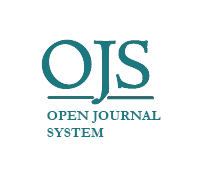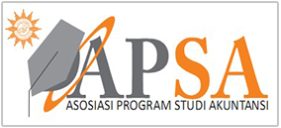Risk Management And Public Service: Integrated Analysis At The Public Sector Organization
DOI:
https://doi.org/10.22219/jrak.v13i3.26910Keywords:
Integrated, Public-Sector Organizations, Public Services, Risk ManagementAbstract
Purpose – This research aims to describe and analyze integrated Risk Management and Public Service at Public Sector Organizations
Methodology/approach – The Study is a quantitative research approach that uses online-based data collection methods (e_ questionnaires) combined with interviews to get their views on integration risk management implementation and public service. The sample in this study was 94 respondents from three (3) public organizations, consisting of the Papua Provincial Government (Finance Staff & APIP), Higher Education Internal Audit (SPI), and Financial Supervisory Institution (BPKP & BPK).
Findings – The results of the analysis show that there are a few key points on how risk management is important and has a close relationship with public service, like this protecting public interest, Enhancing Service Delivery, Allocating Resources Efficiently, Ensuring Compliance and Accountability, Emergency Preparedness and Response, Reputation Management, and Long-term Sustainability. The integration of risk management in public services shows a positive relationship and can contribute to service reliability, better financial management, minimizing fraud and increasing compliance with regulations, maximizing the utilization of assets owned by the government, and having a speed of response to emergency conditions or events, and being able to mitigate risks that may occur.
Practical implications – Risk management in public service helps ensure efficient resource allocation, protect public interests, enhance service delivery, and maintain the integrity and reputation of public organizations. Public service agencies can better serve their communities and fulfill their mandate by proactively managing risks.
Originality/value – This research combines behavioral and psychological approaches to test the occurrence of Risk Management in the Public Sector.
Downloads
References
DAFTAR PUSTAKA
Anand, S. (2006). Enterprise Risk Management – Integrated Framework: Executive Summary. Sarbanes Oxley Group. https://doi.org/10.1002/9781119201939.app4
Boulton, R., Libert, B., & Samek, S. (2000). Cracking the value code. New York: HarperCollins Publishers.
BPKP (2006). Pedoman Manajemen Risiko Sektor Publik. https://www.bpkp.go.id/ puslitbangwas/konten/928/07.047-Pedoman-Manajemen-Risiko-Sektor-Publik.
Bracci, E., Tallaki, M., Gobbo, G., & Papi, L. (2021). Risk management in the public sector: a structured literature review. International Journal of Public Sector Management, 34 (2), 205-223. https://doi.org/10.1108/IJPSM-02-2020-0049
Bullock, J. B., Greer, R. A., & Laurence J O’Toole, J. (2019, March). Managing Risks in Public Organizations: A Conceptual Foundation and Research Agenda. Perspectives on Public Management and Governance, 2(2), 75-87. https://doi.org/10.1093/ppmgov/gvy002
Chowdhury, n., & Shil, N. C. (2019). Influence of New Public Management Philosophy on Risk Management, Fraud and Corruption Control and Internal Audit: Evidence from an Australian Public Sector Organization. Journal of Accounting and Management Information Systems, 10(4), 486-508. https://doi.org/10.24818/jamis.201904002
Durst, S., Hinteregger, C., & Zieba., M. (2019). The linkage between knowledge risk management and organizational performance. Journal of Business Research, 105, 1-10. https://doi.org/10.1016/j.jbusres.2019.08.002
Enrico, B., Mouhcine, T., Giorgia, G., & Papi, L. (2021). Risk Management in The Public Sector: a Structured Literature Review. International Journal of Public Sector Management, 34 (2), 205-223. https://doi.org/10.1108/IJPSM-02-2020-0049
Farazmand, A. (2020). Globalization, Governance and Public Administration. In A. Farazmand, & J. Panskowski, Handbook of Globalization, Governance and Public Administration (pp. 4-23). New York , London: Rouledg Taylor and Francis Group.
Fone, M., & Young, P. (2005). Managing Risks in Public Organizations. Hampshire: Palgrave Macmillan.
Hatvani, E. N. (2015). Risk analysis and risk management in the public sector and in public auditing. Public Finance Quarterly, 1(7).
Hood, C. (2000). Paradoxes of Public-Sector Managerialism, Old Management and Public Service Bargain. International Public Management Journal, 3(1), 1-22. https://doi.org/10.1016/S1096-7494(00)00032-5
Hopkin, P. (2017). Fundamentals of Risk Management: Understanding, valuating and implementing effective risk management (Fourth ed.). New York, Great Britain and the United States: Kogan Page Limited.
Hopkins, M. M., & Nightingale, P. (2006). Strategic risk management using complementary assets: Organizational capabilities and the commercialization of human genetic testing in the UK. Research Policy, 35(3), 355-374. https://doi.org/10.1016/j.respol.2005.12.003
Keban, Y. (2017). Risk Management: a neglected vital instrument in Public Administration in Indonesia. Management Research and Practice, 9(4), 5-21.
Landi, G. C., Iandolo, F., Renzi, A., & Rey, A. (2022). Embedding sustainability in risk management: The impact of environmental, social, and governance ratings on corporate financial risk. Corporate Social Responsibility Environment Management, 1096-1107. https://doi.org/10.1002/csr.2256
Lapuente, V., & Walle, S. V. (2020). The effects of new public management on the quality of public services. Governance, 33(special edition), 461-473.
Louisa, B., & Osborne, S. P. (2012). Towards a framework for risk governance in public services. Public Management Review, 15(2), 186-208. https://doi.org/10.1080/14719037.2012.707681
Mahamaa, H., Elbashir, M., Sutton, S., & Arnold., V. (2022). Enabling Enterprise Risk Management Maturity in Public Sector Organizations. Money & Management, Money & Management, 2022, 403-407 .
Memon, M., Ting, H., Cheah, J. R., Chuah, F., & Cham, T. (2020). Sample size for survey research: review and recommendations. Journal of Applied Structural Equation modelling, 4(2), 1-20. https://doi.org/10.47263/JASEM.4(2)01
Mikes, A. (2011). From counting risk to making risk count: boundary-work in risk management. Accounting, Organizations and Society, 36, 226-245. https://doi.org/10.1016/j.aos.2011.03.002
Parasuraman, A., Zeithaml, V. A., & Berry., L. L. (1985). A Conceptual Model of Service Quality and Its Implications for Future Research. Journal of Marketing, 49(4), 41-50. https://doi.org/10.2307/1251430
Payne, Y. (2022, November 21). IIENSTITU. Retrieved from https://www.iienstitu.com/: https://www.iienstitu.com/en
Riso, V., & Castellini., M. (2019). Poor Integration between Operational Risk Management activities and Internal Control System in the Municipalities: An analysis of the Italian legislative Framework. Business and Management Sciences International Quarterly Review, 10, 149-158. https://doi.org/10.13132/2038-5498/10.1.1956
Sarens., G., Visscher., C. D., & Gils., D. V. (2010). Risk Management and Internal Control in the Public Sector: An In-Depth Analysis of Belgian Social Security Public Institutions. 70e jaargang,, nr. 3,(3e kwartaal), 65-90.
Sofyani, H. (2023). Penentuan Jumlah Sampel pada Penelitian Akuntansi dan Bisnis Berpendekatan Kuantitatif. Reviu Akuntansi dan Bisnis Indonesia, 7(2), 311-319. https://doi.org/10.18196/rabin.v7i2.19031
Sørensen, J., Berlin, J., Nielsen, L., & Carlström, E. (2023). Current Perspectives on the Development of Joint Risk Mitigation, Preparedness, and Response Efforts (Vol. 7:1044231). Frontiers. https://doi.org/10.3389/fcomm.2022.1044231
Stassart, M., & Visscher, C. D. (2005). ‘Fondements théoriques de l’introduc tion des contrats d’administration dans les IPSS’,. Revue Belge de Sécurité Sociale, 3, 385-407.
Tarjo, T., Vidyantha, H. V., Anggono, A., R. Y., & Musyarofah., S. (2022). The effect of enterprise risk management on prevention and detection fraud in Indonesia’s local government. Cogent Economics & Finance, 10(1), 1-19. https://doi.org/10.1080/23322039.2022.2101222
Tim Pusat Inovasi, T. P. (2014). Handbook Inovasi Administrasi Negara. Jakarta: Pusat INTAN-DIAN-LAN.
Vabo, M. (2009, 05 12). New Public Management. The Neoliberal Way of Governance. Retrieved from https://thjodmalastofnun.hi.is. Date of access: .
Vanstapel, F. (2004). Guidelines for Internal Control Standards for the Public Sector. Viena-Austria: INTOSAI_International Organisation of Supreme Audit Institutional. Retrieved from bibliotheque.pssfp.ne
Wideman, R. M., & Fellow, P. (2022). Project and Program Risk Management A Guide to Managing Project Risks and Opportunities. Newtown Square, Pennsylvania 19073 USA: A Publication of the Project Management Institute. Retrieved from Web: http:/,www.pmi.org
Downloads
Published
Issue
Section
License
Copyright (c) 2023 Meinarni Asnawi, Rudiawie Larasati, Azhar Syahrir

This work is licensed under a Creative Commons Attribution-NonCommercial-ShareAlike 4.0 International License.

Jurnal Reviu Akuntansi dan Keuangan is licensed under a Creative Commons Attribution-NonCommercial-ShareAlike 4.0 International License.
Authors who publish with this journal agree to the following terms:
- Authors retain copyright and grant the journal right of first publication with the work simultaneously licensed under a Creative Commons Attribution-NonCommercial-ShareAlike 4.0 International License that allows others to share the work with an acknowledgement of the work's authorship and initial publication in this journal.
- Authors are able to enter into separate, additional contractual arrangements for the non-exclusive distribution of the journal's published version of the work (e.g., post it to an institutional repository or publish it in a book), with an acknowledgement of its initial publication in this journal.
- Authors are permitted and encouraged to post their work online (e.g., in institutional repositories or on their website) prior to and during the submission process, as it can lead to productive exchanges, as well as earlier and greater citation of published work (See The Effect of Open Access).










